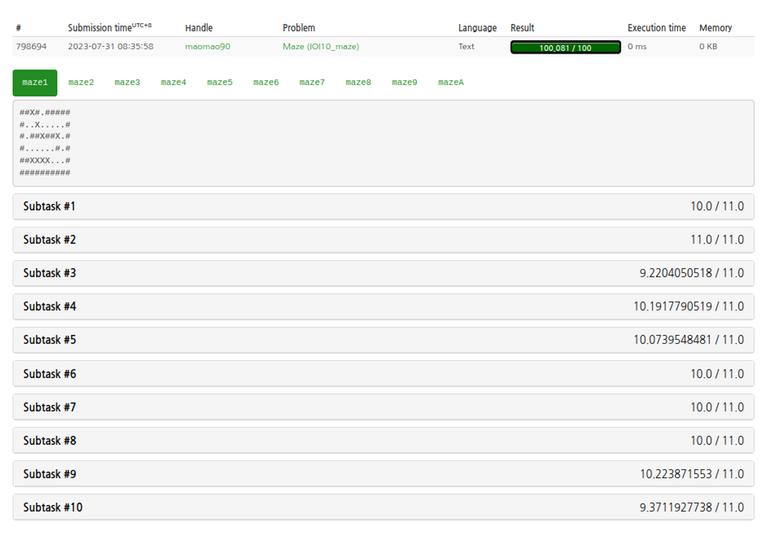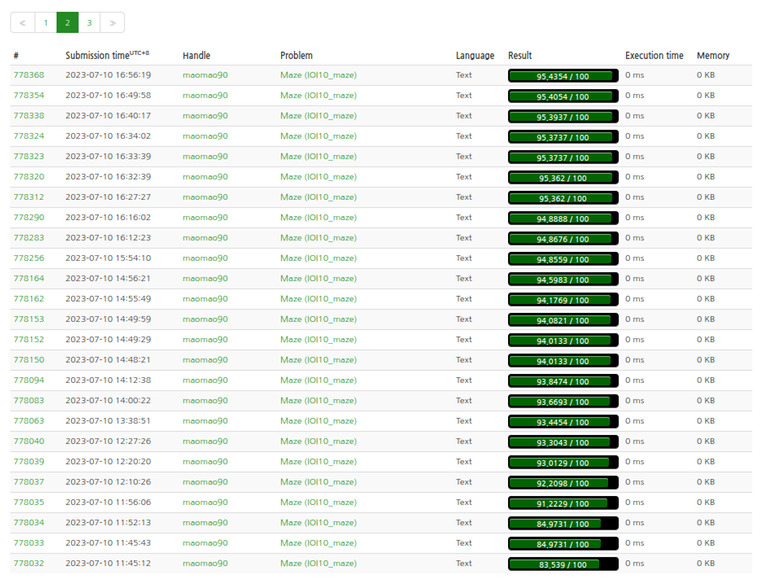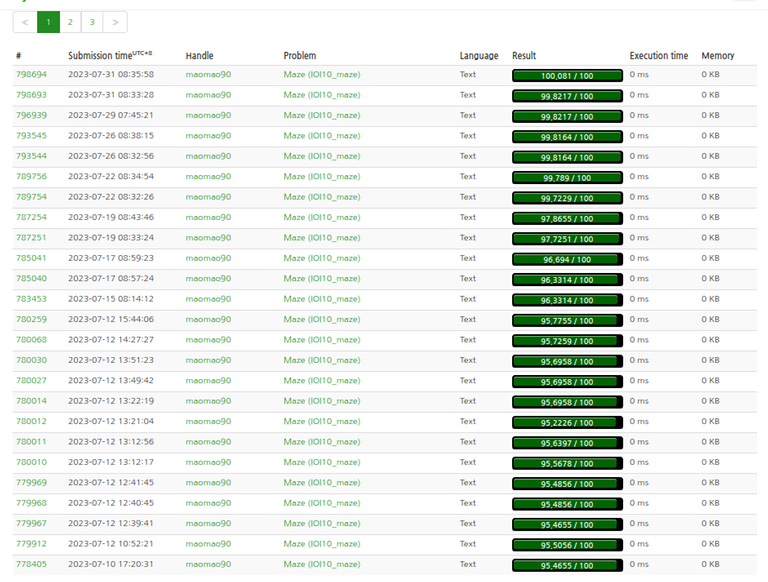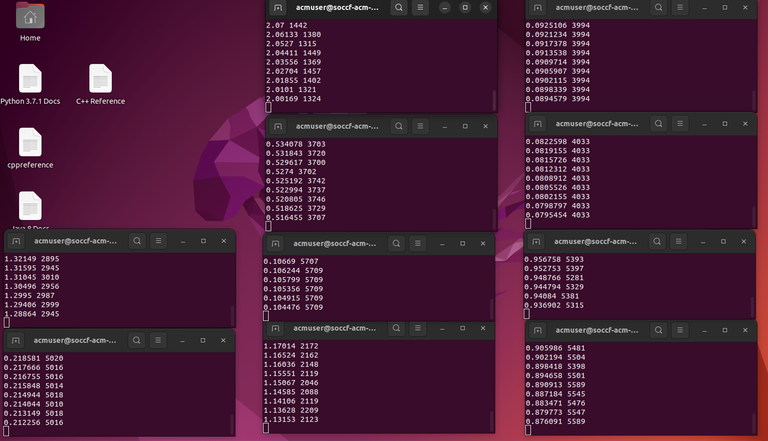After 21 days and 56 submissions on IOI 2010 Maze, I finally broke the 100 point barrier and achieved a score of 100.081 / 100.




Methodology
It's just simulated annealing + a lot a lot of time.
The neighbour function to generate a new state was just randomly choosing one cell to change from '$$$\text{#}$$$' to '$$$\text{.}$$$' or from '$$$\text{.}$$$' to '$$$\text{#}$$$'. Remember to take care that there must be exactly one '$$$\text{.}$$$' at the edge of the maze at all times.
The energy function that we are optimizing is the question itself, which is the maximum length of the shortest path.
The acceptance probability function is the classic exponential function based on the Boltzmann probability distribution.
Finally, the initial temperature used was $$$t_0 = 2.5$$$ with geometric temperature reduction $$$t' = t\cdot \alpha$$$ where $$$\alpha =$$$.
I did not do any optimisation for the energy function, So each iteration takes $$$O(RC)$$$, which is quite slow considering the extremely big $$$\alpha$$$ used. This is why I spent 21 days on this question as each run takes around 1 week to converge on the final answer 🤡.
Takeaways
For such a brain-dead solution, I actually learnt quite a lot of things about simulated annealing. Below is a short list of items to take note of while doing simulated annealing.
As the wise SGP IOI trainer bensonlzl told me: "Always write your intermediate solution to a file so that you can still get partial scores if it doesn't finish running before the contest ends". Writing to file can be quite time-consuming, so I only do it every ~1 million iterations.
To choose a good $$$t_0$$$ and $$$\alpha$$$, I normally start with a high $$$t_0$$$ and a low $$$\alpha$$$, then print the temperature and the energy function after each iteration. Then, I try to choose a $$$t_0$$$ where the energy is not completely random but at the same time there are significant jumps in energy to ensure that enough exploration takes place. I binary search on the $$$\alpha$$$ to use based on how slowly the temperature decreases over time and try to pick the one that is neither too slow nor too fast.
Most of the time running the simulated annealing for a longer time with bigger $$$\alpha$$$ is better than trying to improve a previous solution by letting the initial state be the previous solution and starting with a lower $$$t_0$$$. This is probably because the latter has a higher chance to be stuck in a local minimum.
In a real 5-hour contest scenario, do not spend too much time on the output-only problem. Spend a short time coding the simulated annealing and work on the remaining problems while the code is running in the background. Do not be like me and spend the majority of the contest trying to increase my score from ~80 to ~90 and end up having low score on other problems.
Special Thanks
Firstly, I must thank bensonlzl, the SGP IOI trainer, for teaching me simulated annealing and including this problem in one of the training contest. Secondly,







